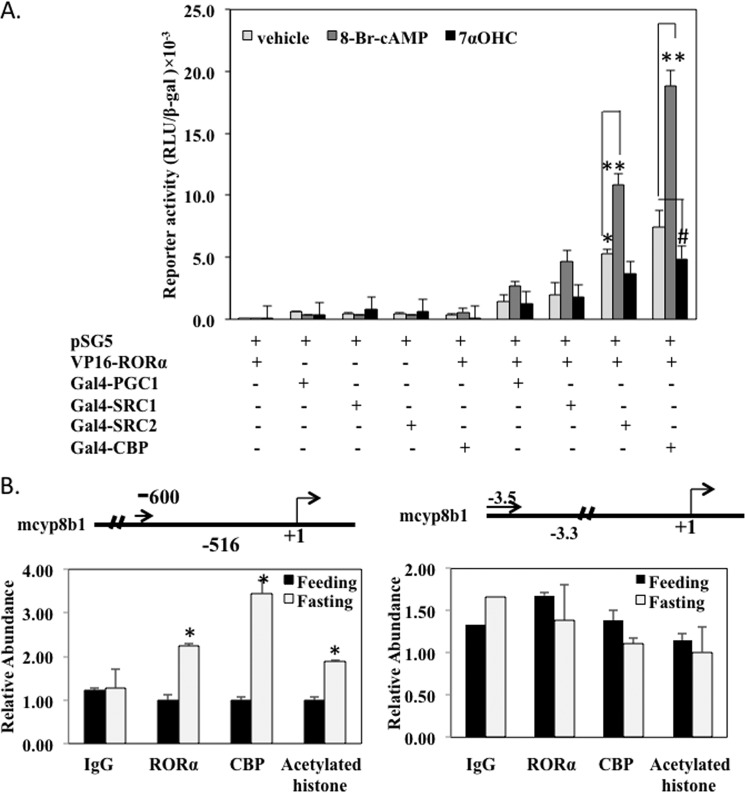FIGURE 9.
RORα interaction with CBP and stimulates histone acetylation of CYP8B1 promoter. A, mammalian two-hybrid assay of RORα interaction with co-activators. A GAL4-TK-Luc reporter, pSG5 (0.2 μg) was co-transfected with VP16-RORα (0.1 μg) and 0.1 μg of Gal4-PGC1α, Gal4-SRC1, Gal4-SRC2, or Gal4-CBP fusion plasmid in HepG2 cells. Cells were treated with 7α-OHC (20 μm) or 8-bromo-cAMP or vehicle for 12 h. Luciferase activity was measured and expressed as relative light units (RLU) normalized to β-galactosidase activity. Each transfection was performed in triplicate. Results are expressed as the mean ± S.E., asterisks indicate statistical significance, p < 0.05, 8-Br-cAMP- or 7α-OHC-treated versus vehicle (DMSO) cells. B, chromatin immunoprecipitation assay of RORα and CBP on Cyp8b1 promoter. Mouse livers from the same experiments under Fig. 1 were used to isolate nuclei for ChIP assay. For precipitation of chromatin, nuclei were mixed with an antibody (8 μl) against RORα, CBP, mono-acetylated histone, or hepatocyte nuclear factor 4α (HNF4α), and rabbit IgG were used as negative control. Left panel, chromatin occupancy (Relative Abundance) was analyzed using real-time PCR to amplify a region of mouse Cyp8b1 promoter containing the RORE (shown in the upper panel). The right panel is the negative control of a 5′-upstream region of mouse Cyp8b1 promoter. Data were normalized using 10% input, and relative chromatin occupancy was calculated with respect to control adenovirus treatment (Ad-null). Results were expressed as the mean ± S.E.; n = 4 for each set of adenovirus over expression; asterisks indicate statistical significance, p < 0.05, Ad-RORα- versus Ad-null-infected mice.

